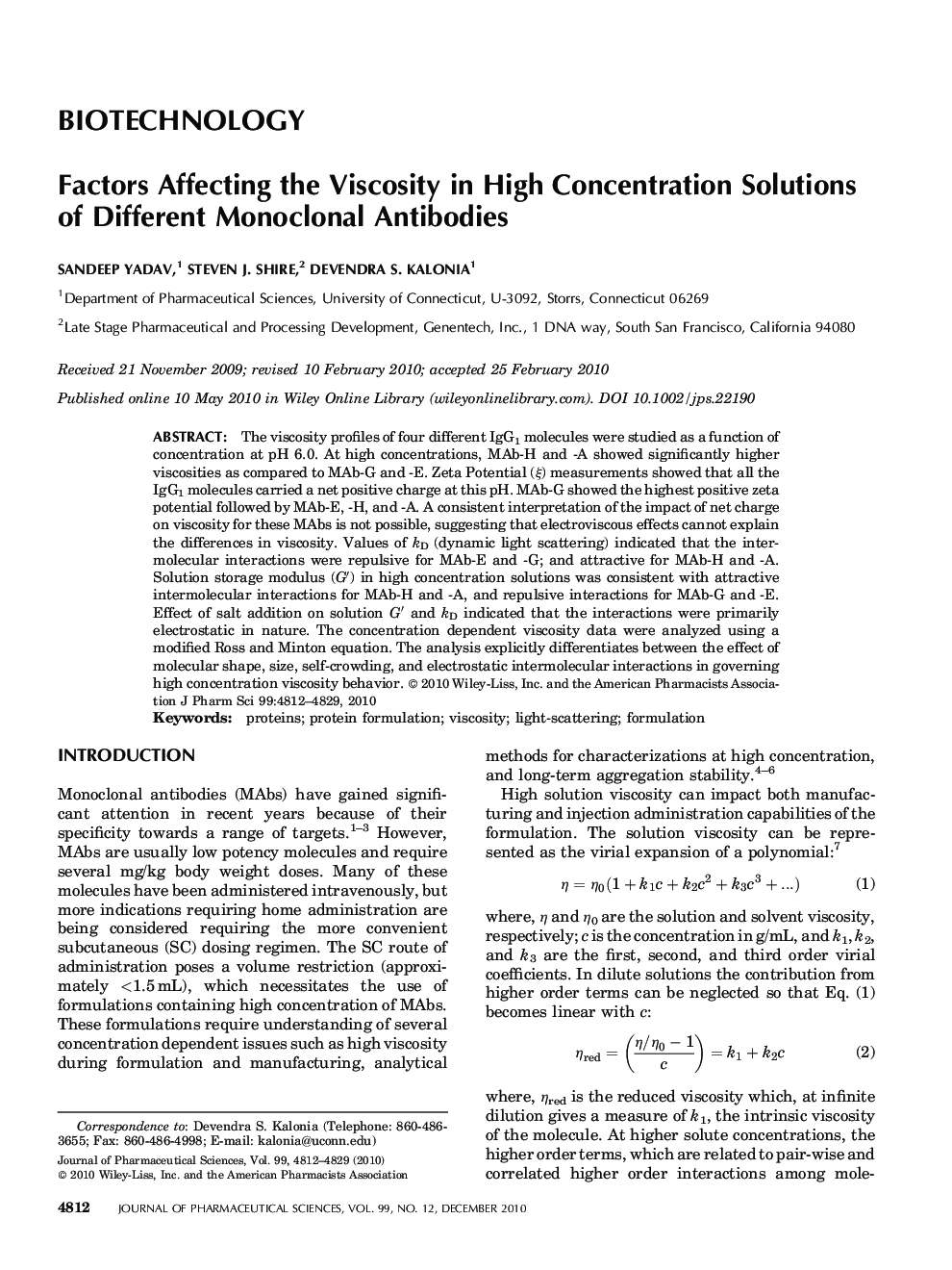| Article ID | Journal | Published Year | Pages | File Type |
|---|---|---|---|---|
| 2484914 | Journal of Pharmaceutical Sciences | 2010 | 18 Pages |
Abstract
The viscosity profiles of four different IgG1 molecules were studied as a function of concentration at pH 6.0. At high concentrations, MAb-H and -A showed significantly higher viscosities as compared to MAb-G and -E. Zeta Potential (ξ) measurements showed that all the IgG1 molecules carried a net positive charge at this pH. MAb-G showed the highest positive zeta potential followed by MAb-E, -H, and -A. A consistent interpretation of the impact of net charge on viscosity for these MAbs is not possible, suggesting that electroviscous effects cannot explain the differences in viscosity. Values of kD (dynamic light scattering) indicated that the intermolecular interactions were repulsive for MAb-E and -G; and attractive for MAb-H and -A. Solution storage modulus (Gâ²) in high concentration solutions was consistent with attractive intermolecular interactions for MAb-H and -A, and repulsive interactions for MAb-G and -E. Effect of salt addition on solution Gâ² and kD indicated that the interactions were primarily electrostatic in nature. The concentration dependent viscosity data were analyzed using a modified Ross and Minton equation. The analysis explicitly differentiates between the effect of molecular shape, size, self-crowding, and electrostatic intermolecular interactions in governing high concentration viscosity behavior.
Related Topics
Health Sciences
Pharmacology, Toxicology and Pharmaceutical Science
Drug Discovery
Authors
Sandeep Yadav, Steven J. Shire, Devendra S. Kalonia,
